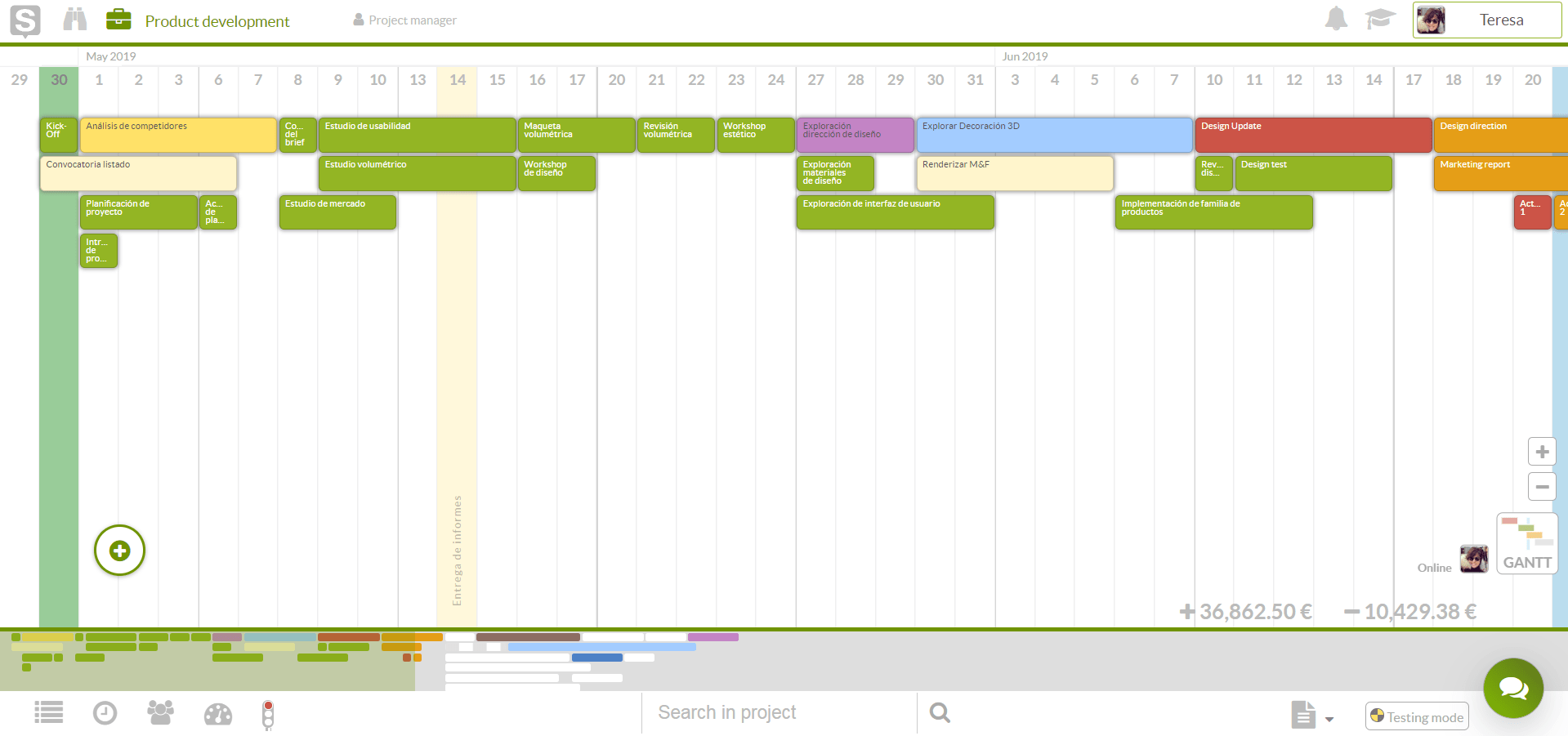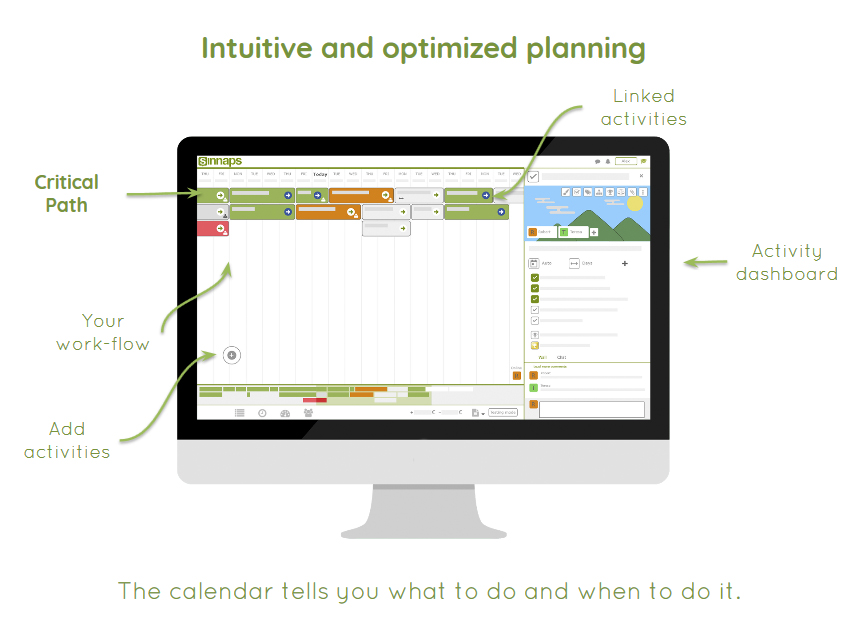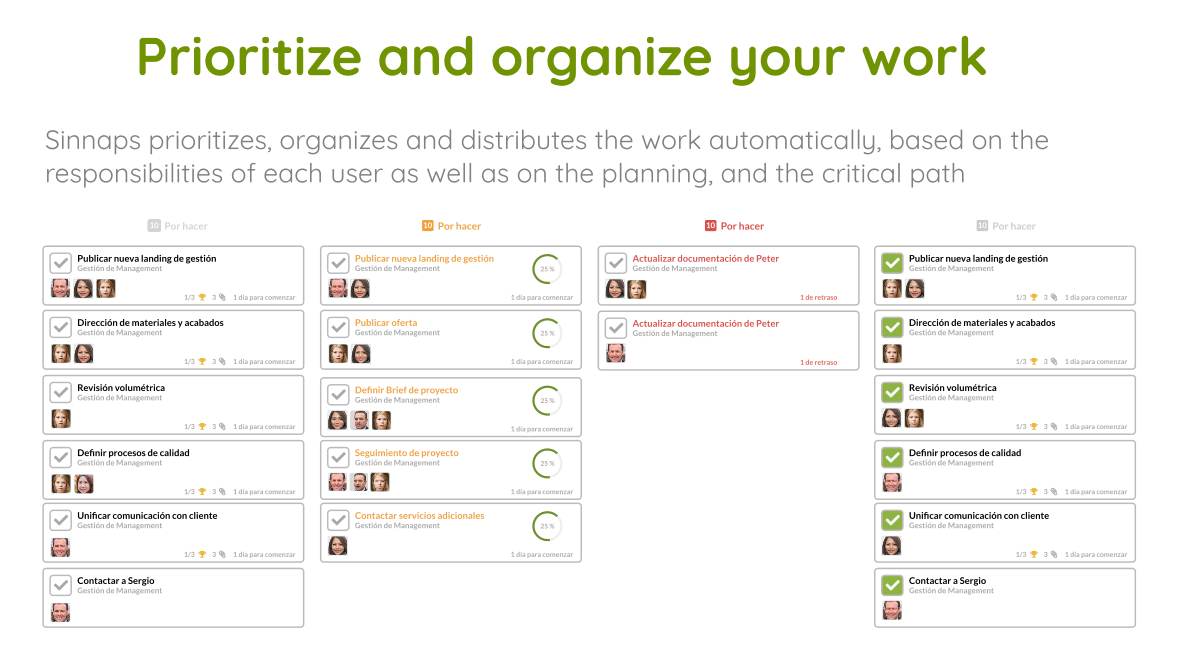Ever wondered how large organisations are able to stay on top of all their projects such that they are able to do things such as release updates on all their projects weekly or fortnightly, while it takes others months and even years to do the same? Welcome to the world of Agile project management and all its possibilities.

While the traditional project methods might take months or even years to develop and release a new product, the concept of Agile project management allows is one that fosters quicker release of working deliverables to meet the needs of users.
In this article, we will discuss scrum project planning and all the benefits it can bring to your organisation. We will look at Agile sprint activities, daily Scrum meetings as well as how to put together a scrum example project plan, including all the details and information that it should contain. And finally, you will learn about Sinnaps project management software and how it can aid your Scrum planning activities.

All about Scrum
- Scrum Roles and Responsabilities
- Scrum Sprint
- Scrum Team
- Scrum Online Tools
- Scrum Methodology
- Kanban vs. Scrum
- Scrum Meeting
- Daily Scrum
- Scrum Stand-up
- Scrum Values
- Agile Scrum Kanban
- Scrum Planning Tool
- Scrum Planning
- Scrum Dashboard
- Scrum Retrospective
- Scrum IT
Scrum Project Plan
One of the reasons why Agile project management has received much success could be seen in the fact that it is well suited to real life applications in business. It is much more accommodating to change which can happen at any time in the lifecycle of a project, and thus, it allows for constant progress throughout the process. With Agile Scrum meetings, teams can sit down to assess what worked and what didn’t and plan further on how they can tailor their workflow to accordingly.
As one of the methodologies with which you can implement Agile’s principles, Scrum is an easy, yet very intuitive way to get things done.
Let’s consider some of the activities in Scrum and how they can affect your project:
- Agile Sprint – This is one of the ceremonies by which teams stick to the Agile principle. Sprints are short periods during which Agile teams work towards completing certain project activities, take the development of working code for example
- Daily Scrum meetings – As Agile teams, there ought to be a way to share information with the rest of the team, identify areas of improvement and get everyone on the same page. This is what daily Scrum meetings seek to achieve
Are there ways by which we can ensure the success of our sprint and daily scrum meetings?
These tips should get you going…
What you should do:
- Identify your project success criteria and clearly explain your sprint goals to your team and ensure they understand how they will be measured. This will bring everyone focused on the goal and in the same direction.
- Prepare a complete project backlog, clearly showing priorities as well as dependencies.
- Sprint meetings are a good time to demystify your project, going into complete details of tasks and all that must be done
- Be sure to use a project management tool like Sinnaps to capture all important decisions of your sprint.
What you shouldn’t do:
- Avoid setting up your team for failure by taking on too many too many stories than you can handle.
- Ensure the team fully understands what must be done, and avoid try to rush through things in a bid to cover more grounds.
Scrum Example Project Plan
But before you can get stuff done with Scrum, you first need to plan your projects. Much like a ship navigating the deep waters, you need to set a course for your destination. So much so, a project plan provides direction for a project by pointing out the routes through which it will reach its destination.
Let’s see what constitutes a Scrum example project plan, and hopefully after this, you can comfortably go ahead and complete yours:
- Scope statement – This is a definition of the project’s boundaries. A good project statement should be specific, measurable, achievable, relevant and time bound.
- Critical Success Factors – These are the criteria that defines success for a project. They may include benefits, customer satisfaction, low rejection rate, quality, etc.
- Deliverables – Deliverables consist the product of the project. Take for example, a project for the development of a software.
- Work Breakdown Structure (WBS) – This is the breaking down of project activities into tasks and sub-tasks .
- Schedule – Scheduling covers the entire process of defining the start and finish time of a project.
- Budget – This is the cost of completing the project endeavour.
- Quality – This lists out the quality standards for a project. Its advantages are far-reaching, and could cause a lot of problems if not properly done.
- Human Resource Plan – This constitutes the project team members, skilled manpower and workers, and they play a very critical part in the success of a project

- Stakeholder List – stakeholders are all the people; government regulatory agencies, project owner, team members, the direct beneficiaries of the project.
- Communication plan – This includes a list of formal communications which are vital to project success. These may include project progress reports, project updates, circulars, etc.

- Risk Register – A risk register contains a list of probable occurrences (risks) that may affect project completion
- Procurement plan – This plan clearly identifies all products and services which are required to complete the project, and contains details on how they will be acquired .
Okay, agreed, Scrum terminologies may be a lot confusing: scrum master planning, scrum backlog management, sprints and all, and you may not like it, but Scrum is everything you want when it comes to the success of your project.

